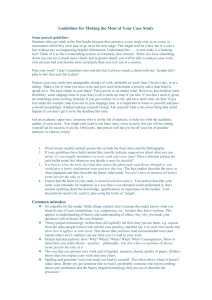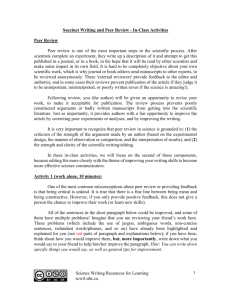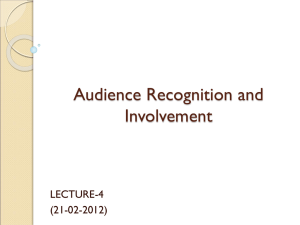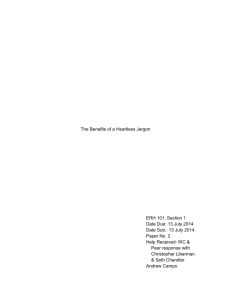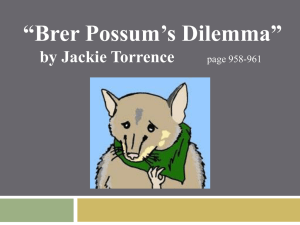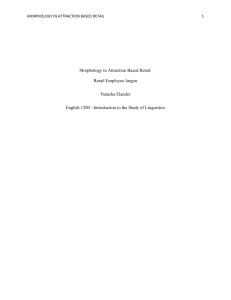What is scientific jargon?
advertisement
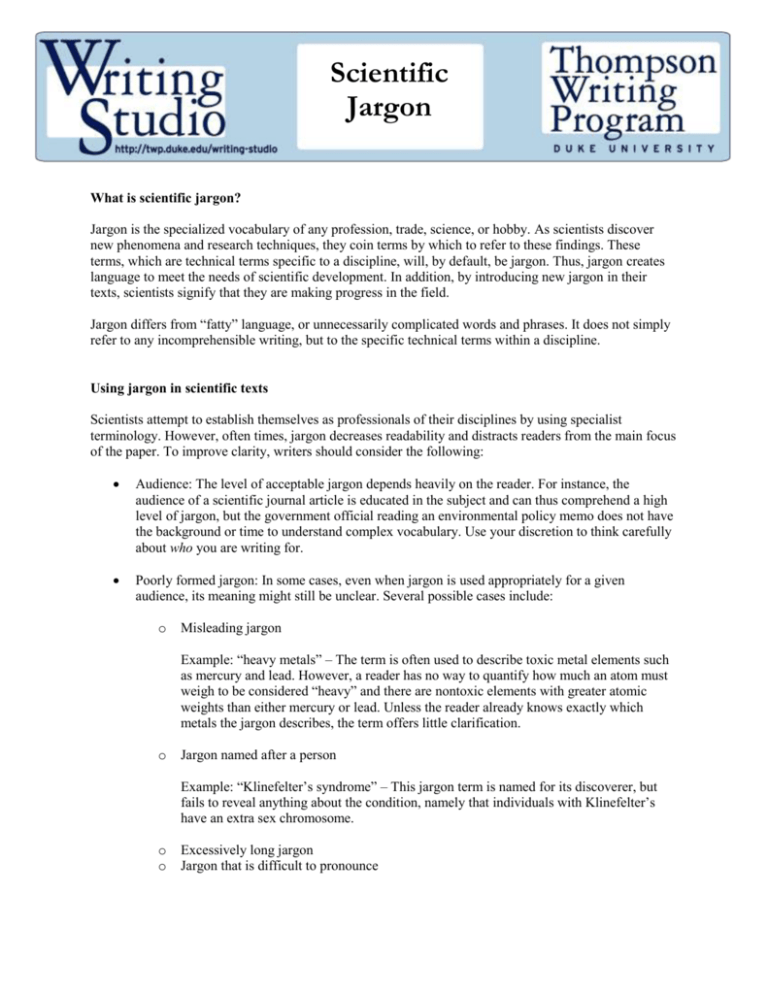
Scientific Jargon What is scientific jargon? Jargon is the specialized vocabulary of any profession, trade, science, or hobby. As scientists discover new phenomena and research techniques, they coin terms by which to refer to these findings. These terms, which are technical terms specific to a discipline, will, by default, be jargon. Thus, jargon creates language to meet the needs of scientific development. In addition, by introducing new jargon in their texts, scientists signify that they are making progress in the field. Jargon differs from “fatty” language, or unnecessarily complicated words and phrases. It does not simply refer to any incomprehensible writing, but to the specific technical terms within a discipline. Using jargon in scientific texts Scientists attempt to establish themselves as professionals of their disciplines by using specialist terminology. However, often times, jargon decreases readability and distracts readers from the main focus of the paper. To improve clarity, writers should consider the following: Audience: The level of acceptable jargon depends heavily on the reader. For instance, the audience of a scientific journal article is educated in the subject and can thus comprehend a high level of jargon, but the government official reading an environmental policy memo does not have the background or time to understand complex vocabulary. Use your discretion to think carefully about who you are writing for. Poorly formed jargon: In some cases, even when jargon is used appropriately for a given audience, its meaning might still be unclear. Several possible cases include: o Misleading jargon Example: “heavy metals” – The term is often used to describe toxic metal elements such as mercury and lead. However, a reader has no way to quantify how much an atom must weigh to be considered “heavy” and there are nontoxic elements with greater atomic weights than either mercury or lead. Unless the reader already knows exactly which metals the jargon describes, the term offers little clarification. o Jargon named after a person Example: “Klinefelter’s syndrome” – This jargon term is named for its discoverer, but fails to reveal anything about the condition, namely that individuals with Klinefelter’s have an extra sex chromosome. o o Excessively long jargon Jargon that is difficult to pronounce Duke Writing Studio 2 Guide for Revision 1. When you have a near-final draft of a paper, read through and annotate every disciplinespecific term. 2. Ask yourself whether the sentence needs the jargon. If not, rephrase the sentence to eliminate the term. This applies even under circumstances when the audience might understand the language. The simpler, the better! 3. If the sentence requires the term, consider both audience and the possibility of poorly formed jargon. Provide definitions for appropriate jargon terms as well as clarifications for any poorly formed jargon. Examples Original: The phospholipid bilayer allows for bidirectional transport of cellular metabolites via membrane pores and transmembrane proteins. Revised: The cell membrane allows for the entry of molecules needed by the cell as well as the exit of molecules produced by the cell. Depending on the molecule, it will either pass through small holes in the membrane called pores or through proteins embedded in the membrane. This example demonstrates unnecessary jargon. The original sentence uses complex biological terms that can be eliminated entirely and replaced with simpler language, while preserving the same meaning. Note that the revised version is longer than the original. Here, clarity takes precedence over concision—the primary concern is that the audience understands the text. Original: Changes in the sequence of DNA during replication can affect other cellular processes such as transcription. Revised: Changes in the DNA sequence during replication can affect other cellular processes such as transcription, which is when the sequence is used to make an RNA copy. This is a situation where scientists must define a scientific term for their readers. The term “transcription” is the simplest term to describe the process by which RNA is made from a DNA copy. Although readers might be able to make the connection between “transcription” and “transcribe,” they might not know the details on their own. The additional definition fills in any lingering information gaps. Original: Genetic abnormalities often result in sterility, such as in Turner syndrome. Revised: Genetic abnormalities often result in sterility, such as in Turner syndrome, a condition in which a female is missing an X chromosome. The revision here clarifies jargon that has been poorly formed. As in the previous example, Turner syndrome is the simplest way to refer to the genetic condition. However, in this case, the term is named after a person and thus offers no insight as to what Turner syndrome is. The definition is required in order for the reader to understand the condition. Additional Resources http://owl.english.purdue.edu/owl/resource/608/03/, “Group Jargon,” Purdue OWL handout http://www.writing.utoronto.ca/advice/specific-types-of-writing/science, “Writing in the Sciences,” University of Toronto Handout
